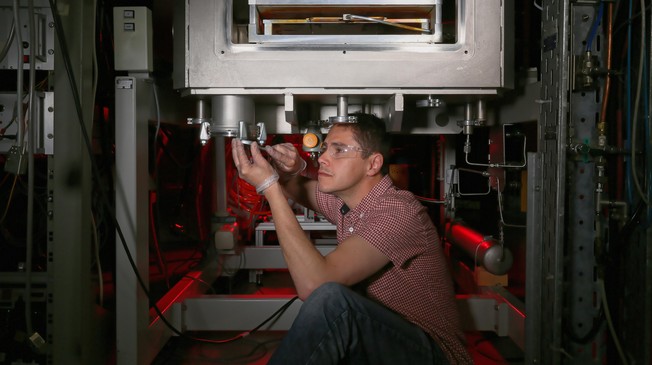
04.05.16 – Cargo ships are among the leading sources of pollution on the planet. Starting in 2020, however, stricter sulfur emission standards will take effect. A low-cost solution for reaching the new targets may come from an EPFL start-up, which is developing a nanostructured filter for use in a ship’s exhaust stacks. Copyright Alain Herzog Courtesy EPFL
A May 4, 2016 news item on Nanowerk describes a marine initiative from the École Polytechnique de Lausanne (EPFL) in Switzerland,
Around 55,000 cargo ships ply the oceans every day, powered by a fuel that is dirtier than diesel. And owing to lax standards, maritime transport has emerged as one of the leading emitters – alongside air transport – of nitrogen oxide and sulfur. But the International Maritime Organization has enacted tighter emission limits, with new standards set to take effect in 2020. In response, an EPFL start-up is developing a low-cost and eco-friendly solution: a filter that can be installed in the ships’ exhaust stacks. The start-up, Daphne Technology, could do well on this massive market.
Given that no oceans or seas border Switzerland, it’s a rather interesting initiative on their part. Here’s more from a May 4, 2015 EPFL press release, which originated the news item,
Lowering sulfur emissions to below 1%
Under laboratory conditions, the nanostructured filter is able to cut sulfur emissions to below 1% and nitrogen oxide emissions to 15% of the current standards. This is a major improvement, seeing as the new standards will require an approximately 14% reduction in sulfur emissions.
Manufacturing the filters is similar to manufacturing solar cells. A thin metal plate – titanium in this case – is nanostructured in order to increase its surface area, and a number of substances are deposited in extremely thin layers. The plates are then placed vertically and evenly spaced, creating channels through which the toxic gases travel. The gases are captured by the nanostructured surfaces. This approach is considered eco-friendly because the substances in the filter are designed to be recycled. And the exhaust gas itself becomes inert and could be used in a variety of products, such as fertilizer.
The main challenges now are to figure out a way to make these filters on large surfaces, and to bring down the cost. It was at EPFL’s Swiss Plasma Center that researcher Mario Michan found a machine that he could modify to meet his needs: it uses plasma to deposit thin layers of substances. The next step is to produce a prototype that can be tested under real-world conditions.
Michan came up with his solution for toxic gas emissions after he worked on merchant ships while completing his Master’s degree in microengineering. It took several years, some techniques he picked up in the various labs in which he worked, and a few patents for Michan to make headway on his project. It was while he was working in another field at CERN and observing the technologies used to coat the inside of particle accelerators that he discovered a process needed for his original concept. An EPFL patent tying together the various aspects of the technology and several manufacturing secrets should be filed this year.
According to the European Environment Agency, merchant ships give off 204 times more sulfur than the billion cars on the roads worldwide. Michan estimates that his nanostructured filters, if they were used by all cargo ships, would reduce these emissions to around twice the level given off by all cars, and the ships would not need to switch to another fuel. Other solutions exist, but his market research showed that they were all lacking in some way: “Marine diesel fuel is cleaner but much more expensive and would drive up fuel costs by 50% according to ship owners. And the other technologies that have been proposed cannot be used on boats or they only cut down on sulfur emissions without addressing the problem of nitrogen oxide.”
